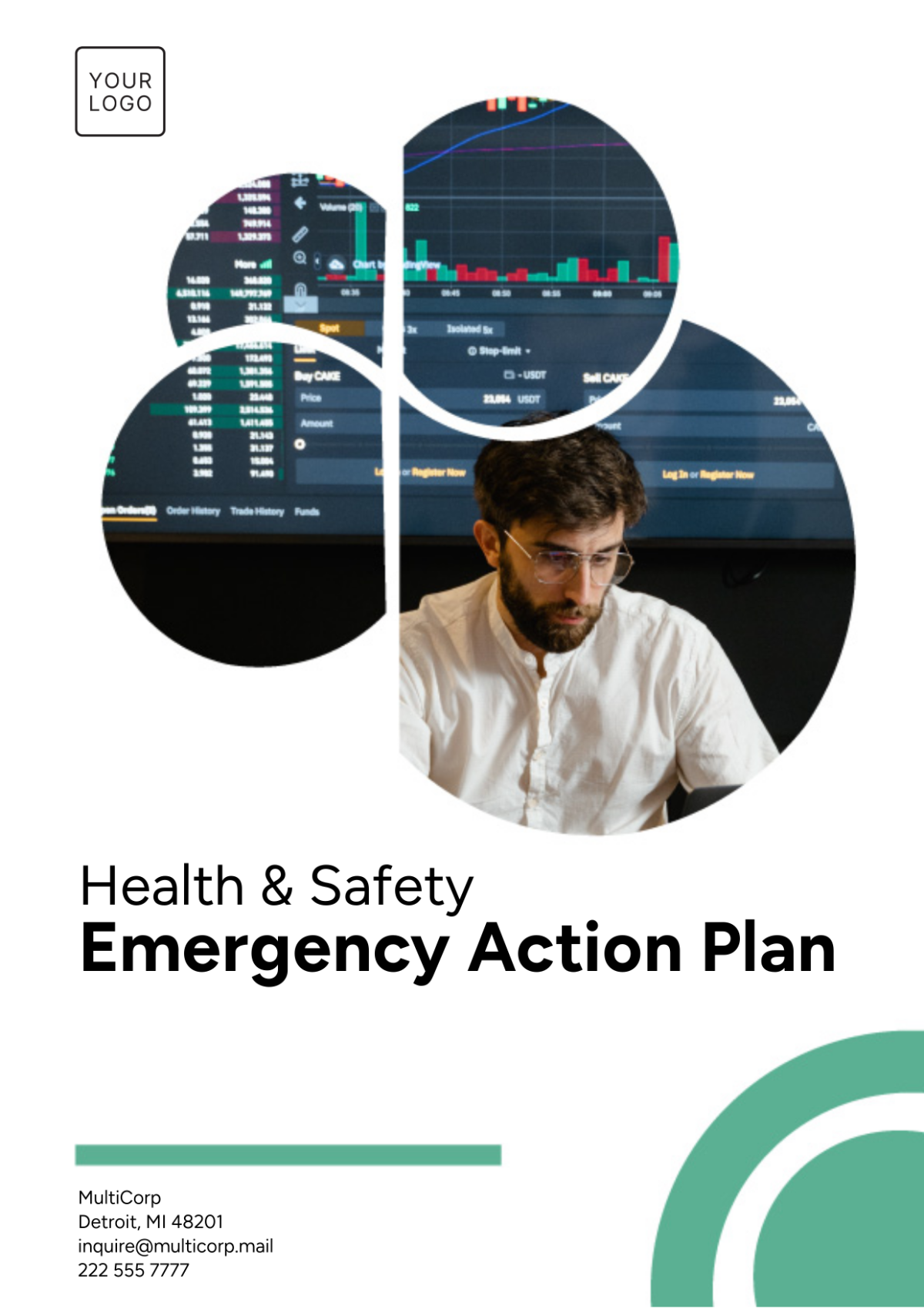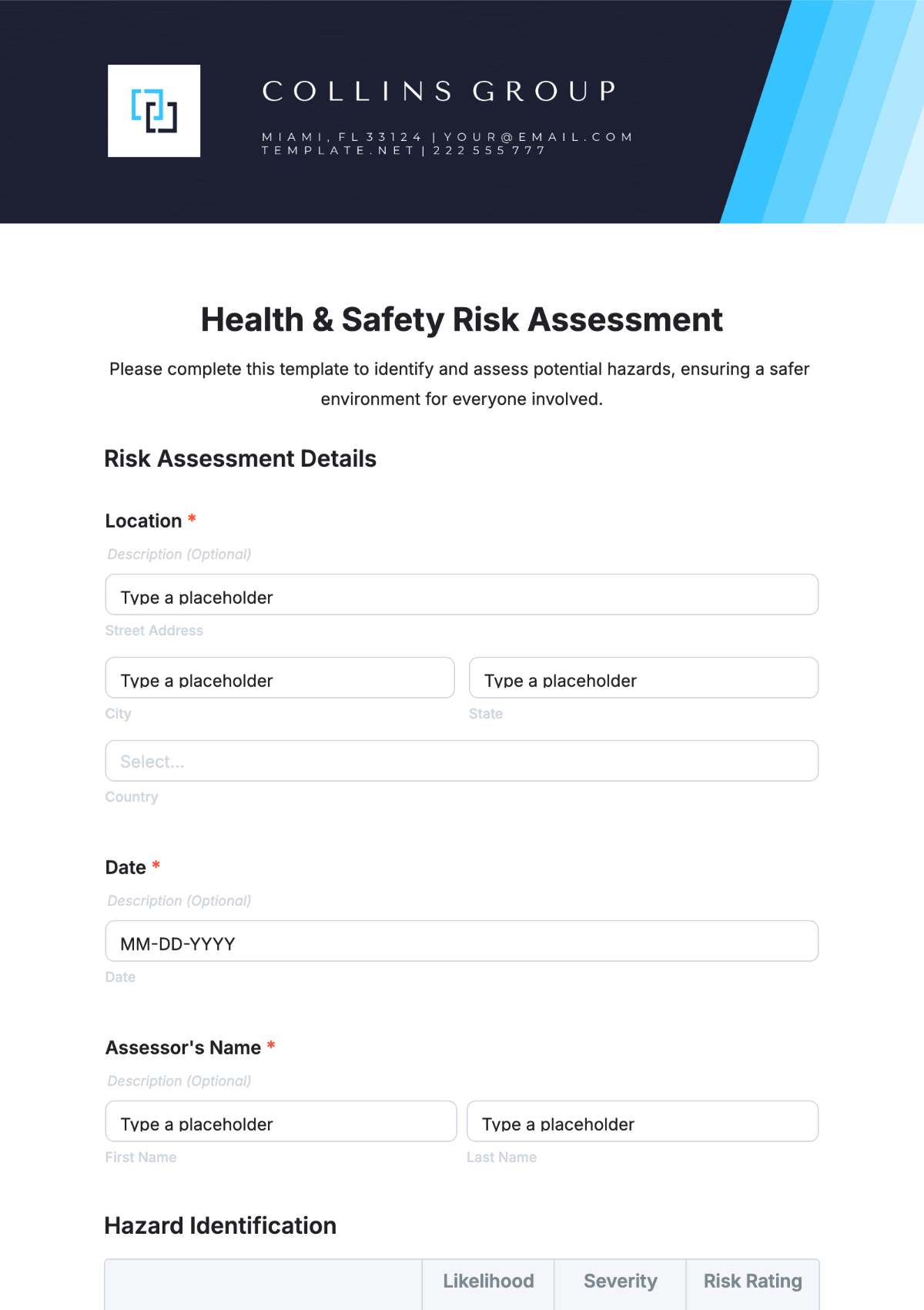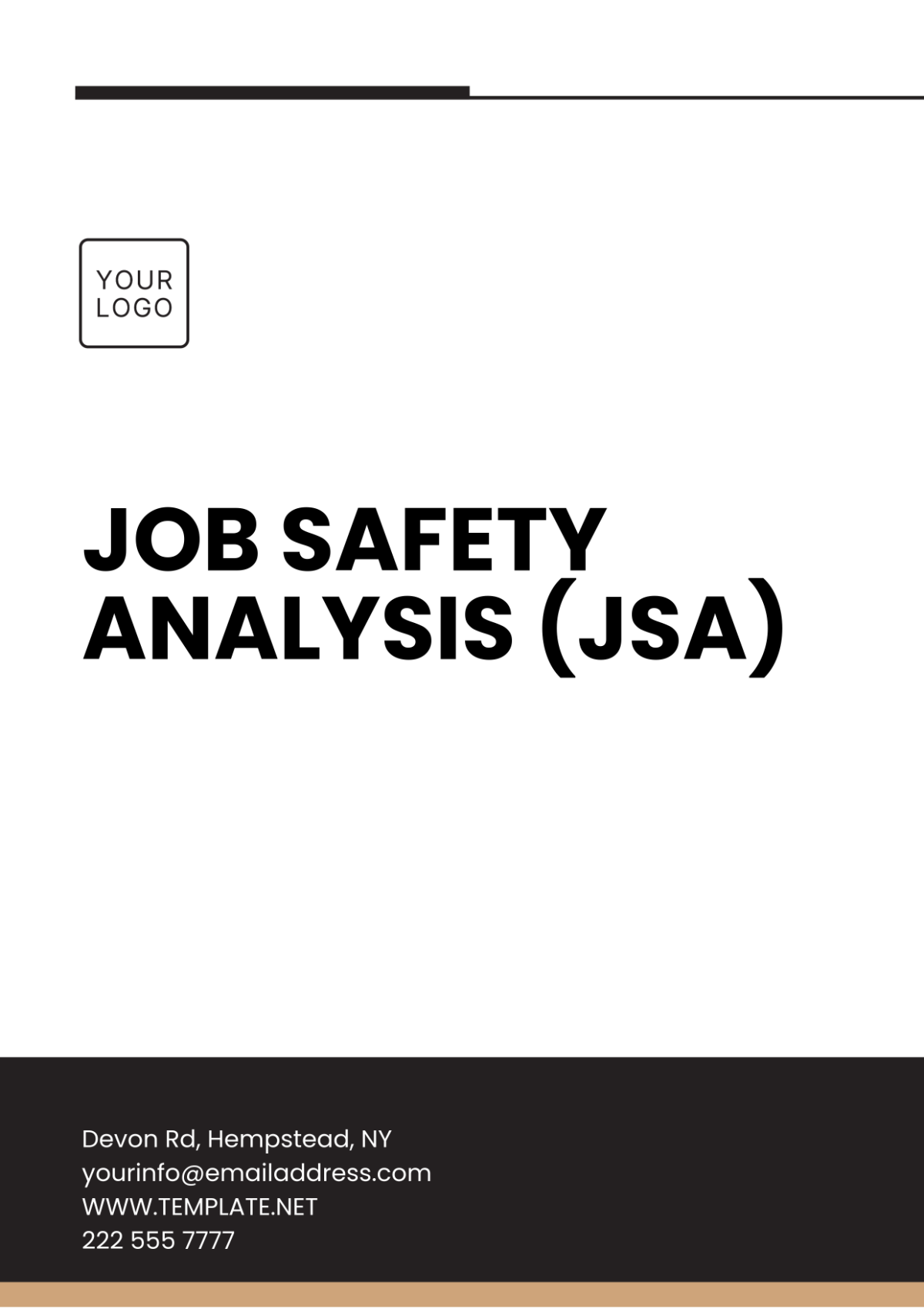PPE Protocol Development
I. Introduction and Objectives
The PPE Protocol at [Your Company Name] is established to ensure the safety and well-being of all employees by providing clear guidelines on the use of Personal Protective Equipment. This protocol is applicable across various departments, including manufacturing, laboratory, and maintenance.
Purpose: The PPE Protocol aims not only to protect employees from physical injuries but also to foster a safety-conscious work culture. It serves as a guideline for the proper selection, use, and management of PPE, aligning with the company's commitment to employee health and safety. |
Scope: The protocol covers scenarios ranging from routine operations to emergency situations across all departments. It specifies different PPE requirements for varied risk levels, ensuring comprehensive coverage. |
Objectives: Beyond compliance and injury reduction, the objectives include promoting employee confidence in workplace safety measures, enhancing the understanding of PPE's role in overall risk management, and ensuring that PPE practices adapt to evolving workplace environments and regulations. |
II. PPE Identification and Selection
This section outlines the systematic approach to identifying and selecting appropriate PPE for various job roles and hazards.
A. Diverse PPE Inventory
The inventory includes specialized PPE like chemical-resistant gloves, arc flash protective gear, and full-face respirators, among others. Each item is cataloged with specific features suitable for particular hazards.
PPE Type | Hazard Protection | Features |
Chemical-Resistant Gloves | Chemical burns, exposure | Acid-proof, flexible, long cuff |
Arc Flash Protective Gear | Electrical hazards | Flame-resistant, insulated layers |
Full-Face Respirators | Airborne particles, gases | Full-face coverage, replaceable filters |
High-Visibility Clothing | Low visibility, traffic hazards | Reflective material, fluorescent color |
Hearing Protection | Noise exposure | Noise reduction rating (NRR) specified |
B. Comprehensive Selection Criteria
Selection criteria encompass ergonomic design, compatibility with other safety equipment, and employee feedback on comfort and ease of use. This ensures that PPE not only meets safety standards but also enhances user compliance.
PPE Type | Ergonomic Design | Compatibility with Other Equipment | Employee Feedback Impact |
Chemical-Resistant Gloves | Form-fitting, dexterity | Compatible with safety sleeves | Prioritized for comfort in long-duration use |
Arc Flash Protective Gear | Lightweight, freedom of movement | Can be worn over standard workwear | Feedback led to improved breathability |
Full-Face Respirators | Balanced weight distribution | Compatible with safety helmets | Adjustments made for better visibility |
High-Visibility Clothing | Adjustable sizes, breathable | Can be worn with body harnesses | Enhanced comfort for extended wear |
Hearing Protection | Adjustable, low-pressure fit | Compatible with helmets, eyewear | User input led to selection of more comfortable models |
C. Supplier and Quality Assurance
Establish a rigorous vetting process for suppliers focusing on product quality, sustainability practices, and their ability to provide continuous support and education about their products.
PPE Type | Supplier Evaluation Criteria | Quality Assurance Measures |
Chemical-Resistant Gloves | Chemical resistance testing, supplier reputation | Regular quality checks, certification verification |
Arc Flash Protective Gear | Compliance with NFPA standards, manufacturing quality | Batch testing for insulation and flame resistance |
Full-Face Respirators | Filter efficiency, durability testing | Compliance with NIOSH standards, ongoing performance evaluations |
High-Visibility Clothing | Material quality, visibility testing | Regular audits for reflective material effectiveness |
Hearing Protection | NRR rating verification, user comfort studies | Consistent NRR testing, field performance feedback |
III. Usage Guidelines
Detailed usage guidelines are crucial for ensuring that PPE is used effectively to provide maximum protection.
A. Step-by-Step Usage Instructions
Include step-by-step instructions for using each type of PPE. This section cover scenarios such as routine daily tasks, handling of hazardous materials, and emergency response.
PPE Type | Usage Scenario | Step-by-Step Instructions |
Chemical-Resistant Gloves | Handling hazardous materials |
|
Arc Flash Protective Gear | Working with electrical equipment |
|
Full-Face Respirators | In environments with airborne contaminants |
|
High-Visibility Clothing | Working in low visibility areas |
|
Hearing Protection | In high-noise environments |
|
B. Contextual Usage Scenarios
Define clear criteria for PPE use in different work environments, including indoor, outdoor, and confined spaces. Highlight the importance of using specific PPE during unusual or non-routine tasks.
PPE Type | Work Environment | Usage Criteria |
Chemical-Resistant Gloves | Laboratory, manufacturing plants | Mandatory during chemical handling and cleanup operations. |
Arc Flash Protective Gear | Electrical maintenance areas | Required when working on or near charged electrical equipment. |
Full-Face Respirators | Paint shops, dusty areas | Use in environments with airborne particles or toxic fumes. |
High-Visibility Clothing | Construction sites, roadside work | Essential where workers are near moving vehicles or equipment. |
Hearing Protection | Manufacturing floors, airport grounds | Use in areas where noise levels exceed OSHA's permissible exposure limit. |
C. Understanding Limitations
Educate employees about the physical and functional limitations of each PPE type, including their lifespan and the conditions under which they may fail or require replacement.
PPE Type | Limitations | Conditions for Replacement |
Chemical-Resistant Gloves | Susceptible to wear and tear; limited chemical resistance | Replace if there are signs of degradation, tears, or permeation. |
Arc Flash Protective Gear | Can be bulky; heat stress | Replace if there's any sign of burn damage or compromised integrity. |
Full-Face Respirators | Limited field of vision; filter lifespan | Replace facepiece if cracked; filters as per usage guidelines. |
High-Visibility Clothing | Visibility can diminish with wear and dirt | Replace when the reflective material no longer stands out or if damaged. |
Hearing Protection | Effectiveness varies by fit and wear | Replace if seals are damaged or if they no longer fit properly. |
IV. Maintenance, Inspection, and Storage
Proper care and handling of PPE are vital for maintaining their protective qualities and extending their service life.
A. In-Depth Maintenance Procedures
Provide detailed guidelines for cleaning, disinfecting, and maintaining PPE. This includes specific instructions for different materials and components of PPE.
PPE Type | Cleaning Guidelines | Maintenance Tips |
Chemical-Resistant Gloves | Wash with mild detergent; air dry | Regularly check for brittleness or cracks |
Arc Flash Protective Gear | Clean with non-abrasive cleaner; air dry | Inspect for any burn marks or tears |
Full-Face Respirators | Disassemble and wash components; sanitize | Check the integrity of seals and straps |
High-Visibility Clothing | Machine wash with mild detergent; hang dry | Avoid ironing to preserve reflective strips |
Hearing Protection | Wipe with damp cloth; replace ear cushions | Regularly check for loss of elasticity |
B. Regular Inspection Protocols
Develop comprehensive inspection checklists for pre-use, post-use, and periodic inspections. Emphasize the importance of employee self-inspection before each use.
PPE Type | Pre-Use Inspection | Post-Use Inspection | Periodic Inspection |
Chemical- Resistant Gloves | Check for tears or punctures | Inspect for signs of chemical damage | Monthly check for elasticity and wear |
Arc Flash Protective Gear | Inspect for any loose components | Look for discoloration or damage | Bi-annual comprehensive inspection |
Full-Face Respirators | Ensure filters and seals are intact | Clean facepiece; check valve function | Quarterly check of overall functionality |
High-Visibility Clothing | Verify visibility and condition of fabric | Check for stains or fabric damage | Semi-annual review for fading or wear |
Hearing Protection | Examine for cleanliness and fit | Clean and check for wear and tear | Annual inspection for degradation or damage |
C. Optimal Storage Solutions
Outline best practices for PPE storage, including environmental conditions, segregation of contaminated PPE, and methods to prevent damage during storage.
PPE Type | Storage Environment | Storage Tips |
Chemical-Resistant Gloves | Cool, dry place away from direct sunlight | Hang or lay flat; avoid folding or creasing |
Arc Flash Protective Gear | Dry, ventilated area | Store flat or on a hanger; avoid compression |
Full-Face Respirators | Clean, dust-free environment | Store in a resealable bag or container |
High-Visibility Clothing | Clean, dry area; avoid dampness | Hang to prevent creasing; separate from dirty clothing |
Hearing Protection | Away from heat sources and contaminants | Store in a clean case; avoid exposure to dirt or oil |
V. Training and Compliance
Effective training and stringent compliance are key to ensuring the successful implementation of the PPE Protocol.
Extensive Training Programs: Develop a multi-tiered training program that includes introductory sessions for new hires, specialized training for specific PPE, and ongoing refresher courses. Incorporate interactive elements such as simulations and quizzes.
Robust Compliance Monitoring System: Implement a compliance monitoring system that includes regular audits, spot checks, and reporting mechanisms. Utilize technology solutions where applicable to track and manage compliance data.
Documentation and Record-Keeping: Maintain comprehensive records of all training sessions, inspection reports, and compliance audits. Utilize digital systems for efficient tracking and easy retrieval of records. Regularly review and update documentation to reflect any changes in PPE protocols or standards.
Prepared by:
[Your Name],
[Your Job Title]
[Your Email] | [Your Number]

















































